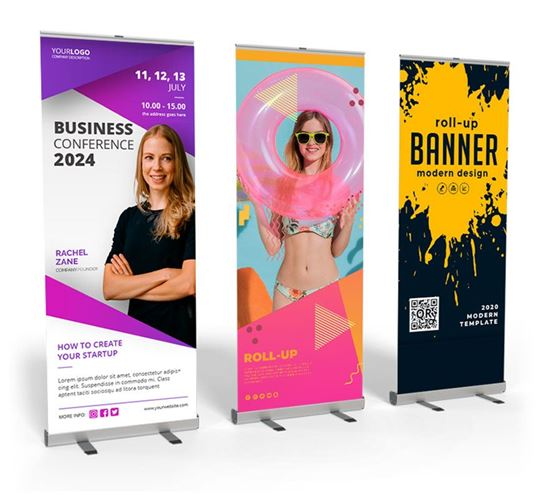The Ultimate Guide to Business Card Printing in Dubai: Making Your Mark in the Business World
Introduction
In today's fast-paced business environment, where digital communication dominates, the humble business card remains a powerful tool for networking and making lasting impressions. In Dubai, a city known for its thriving business landscape and entrepreneurial spirit, the importance of a well-designed business card cannot be overstated. From conveying professionalism to showcasing creativity, business cards play a crucial role in establishing brand identity and fostering business relationships. In this comprehensive guide, we delve into the world of business card printing Dubai, exploring the process, trends, and tips for creating cards that leave a lasting impact.
Understanding the Importance of Business Cards
Despite the rise of digital networking platforms, business cards continue to be an essential element of professional etiquette and branding. They serve as tangible reminders of meetings and conversations, providing recipients with contact information and a glimpse into your brand identity. In a city like Dubai, where face-to-face interactions are highly valued, the exchange of business cards remains a customary practice, signaling respect and sincerity in business dealings.The Role of Business Card Printing Services
In Dubai's competitive business landscape, the quality and design of your business card can set you apart from the crowd. This is where professional printing services come into play. Business card printing companies in Dubai offer a range of options, from standard designs to custom solutions tailored to meet specific branding needs. These services utilize advanced printing technologies and high-quality materials to ensure that your cards make a lasting impression.Types of Business Cards
1. Standard Business Cards:
2. Premium Business Cards:
3. Creative Business Cards:
4. Mini Business Cards:
5. Square Business Cards:
6. Folded Business Cards:
7. Transparent Business Cards:
8. Eco-Friendly Business Cards:
Key Considerations for Business Card Printing
When embarking on the business card printing process, several factors need to be considered to ensure optimal results. These include:Design: The design of your business card should reflect your brand identity and convey professionalism. Whether opting for a minimalist approach or incorporating vibrant colors and graphics, it's essential to strike the right balance between aesthetics and functionality.
Material: The choice of material can significantly impact the look and feel of your business card. Options range from standard paper stocks to premium finishes such as matte, glossy, or textured surfaces. Consider factors such as durability and tactile appeal when selecting the appropriate material for your cards.
Printing Techniques: In addition to traditional offset printing, many printing companies in Dubai offer specialized techniques such as embossing, foil stamping, and die-cutting to add visual interest to your cards. These techniques can elevate the overall design and make your cards stand out in a sea of competitors.
Quantity: Before placing your order, carefully assess your printing needs based on factors such as anticipated usage and budget constraints. While bulk printing may offer cost savings, it's essential to strike a balance to avoid excess waste or shortage of cards when needed.
Turnaround Time: In the fast-paced business environment of Dubai, timely delivery is crucial. When selecting a printing service, inquire about their turnaround times and ensure that they can meet your deadlines without compromising on quality.
Trends in Business Card Design
Like any other aspect of design, business card trends evolve over time, reflecting changes in aesthetics, technology, and cultural influences. In Dubai, where innovation and creativity are highly valued, businesses often embrace cutting-edge design trends to make a memorable impression. Some of the latest trends in business card design include:Minimalism: Clean, minimalist designs continue to be popular, emphasizing simplicity and sophistication. Minimalist business cards often feature sleek typography, ample white space, and subtle accents for a timeless look.
Sustainable Materials: With growing awareness of environmental issues, many businesses in Dubai are opting for eco-friendly materials such as recycled paper or biodegradable plastics for their business cards. These sustainable options not only reduce environmental impact but also convey a commitment to corporate social responsibility.
Interactive Elements: In an age where digital integration is ubiquitous, some businesses are incorporating interactive elements into their business cards, such as QR codes or augmented reality features. These interactive elements provide additional value to recipients and encourage further engagement with the brand.
Bold Typography: Eye-catching typography can instantly grab attention and convey personality. Bold fonts, unconventional layouts, and creative typography treatments are popular choices for businesses looking to make a statement with their business cards.
Unique Shapes and Textures: Die-cutting and custom shapes can add visual interest and make your business cards stand out from the crowd. Likewise, incorporating textured finishes such as embossing, debossing, or foil stamping can enhance tactile appeal and leave a memorable impression.
Tips for Creating Memorable Business Cards
Whether you're a startup entrepreneur or a seasoned executive, creating memorable business cards requires careful planning and attention to detail. Here are some tips to help you make the most of your business card design:Keep it Consistent: Ensure that your business card design aligns with your brand identity and other marketing collateral. Consistency in branding helps reinforce brand recognition and credibility.
Prioritize Readability: While creativity is important, readability should never be sacrificed. Choose fonts and font sizes that are easy to read, especially when conveying essential contact information.
Include Relevant Information: Limit the information on your business card to essential details such as your name, job title, company name, contact number, email address, and website. Including too much information can clutter the design and overwhelm recipients.
Make it Interactive: Consider adding interactive elements such as QR codes or social media icons to encourage recipients to connect with you online. This can facilitate further engagement and networking opportunities.
Quality Matters: Invest in high-quality materials and printing techniques to ensure that your business cards reflect the professionalism of your brand. A well-crafted business card conveys attention to detail and leaves a positive impression on recipients.










Comments
Post a Comment